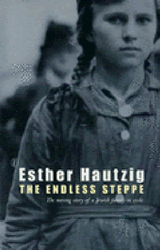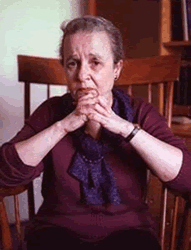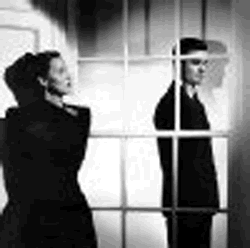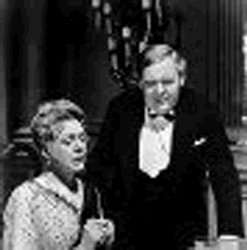Esther R. Hautzig (born October 18, 1930 – died November 1, 2009) was an American writer, best known for her award-winning book The Endless Steppe (1968).
Esther Rudomin was born in Wilno, Poland (present-day Vilnius, Lithuania). Her childhood was interrupted by the beginning of World War II and the conquest in 1941 of eastern Poland by Soviet troops. Her family was uprooted and deported to Rubtsovsk, Siberia, where Esther spent the next five years in harsh exile (yet her family was lucky to be deported. They were saved from the tragic fate of most Jews in Vilna, who perished at the hands of the Nazis). Her award winning novel The Endless Steppe is an autobiographical account of those years in Siberia. After the war, she and her family moved back to Poland when she was 15. Hautzig reportedly wrote The Endless Steppe at the prompting of Presidential candidate Adlai Stevenson, to whom she had written after reading his articles about his visit to Rubtsovsk.
Personal life and death
Rudomin met Walter Hautzig, a concert pianist, while en route to America on a student visa in 1947. They married in 1950, and had two children, Deborah, a children's author, and David. She died on November 1, 2009, aged 79, from a combination of congestive heart failure and complications from Alzheimers disease.[1]
Hautzig helped to discover and eventually publish the master's thesis in mathematics written by her uncle Ela-Chaim Cunzer (1914-1943/44) at the University of Wilno in 1937. He was taught, among others, by Antoni Zygmund. Cunzer died in a concentration camp.
In 1941 Esther and her family are arrested by Soviet troops because they were capitalists and were taken away from their home in Vilna, Poland and transported to Siberia in Russia. On arrival, Esther's mother and father are forced to work in a gypsum mine, and Esther and her grandmother must work in the fields. Eventually Esther and her family get a hut of their own, and Esther attends a local school in Rubtsovsk, but they still have to face the cold of the Siberian winter, summer heat, constant hunger, and the conscription of Esther's father into the Red Army. There are some similarities between this work and The Diary of a Young Girl (Anne Frank's Diary), as both are non-fiction books dealing with the horror of World War II, each told through the perspective of an adolescent Jewish girl; however, the background of The Endless Steppe is much less well known, and has a different outcome.
Memoir[edit]
In 1941, young Esther Rudomin (as she was then) lives a charmed existence in the pretty town of Vilna (Wilno) in northeast Poland (now capital Lithuania). She is a somewhat spoiled only child living with her large extended family, and her parents are wealthy and well-respected members of the Jewish community, largely due to her father's skilled trade as an electrical engineer. Despite the Nazi invasion and the Soviet occupation of their region, to 10-year-old Esther the war is something that ends at her garden gate. One June day, Soviet soldiers arrive at their house declaring the Rudomins as "capitalists and enemies of the people." Their house and valuables are seized, and Esther, her parents, and her grandparents are packed into cattle cars and "relocated" to another part of the great and mighty Soviet Union, which turns out to be a forced labour camp in Siberia.
This first half of the book is the most vivid as Esther recalls the horrors of this insane world: the customary division of the healthy and weak, so that Esther's grandfather is separated from the family, where it is later revealed where he was sent to a gulag where he soon died of bronchitis and pneumonia; the nightmarish two month train journey with nothing more than watery soup to sustain them; the disorienting arrival in the camp; and the backbreaking work in a gypsum mine that they are forced to do. She also describes the unexpected mercies that existed alongside it: the local children who smuggled food to the slave labourers at considerable danger to themselves; the amnesty, requested by Britain, that allows the Poles to be released from the camp and to move to Rubtsovsk, a nearby village; and the kindness of the villagers, people with almost as little as the Rudomins, who enable them to survive their exile.
This is a book of many ironies. The Rudomins go from privileged complacency, in which they rely on servants to do everything for them, to a world where the growth of a potato plant can mean the difference between life and death. Esther is also forced to rely on making clothes for the few rich people of the village—the sort of people they had been in Poland—for the price of a bit of bread and milk. She almost absorbs the harsh Soviet message of their exile, feeling a perverse pride that "the little rich girl of Vilna survived poverty as well as anyone else."
In essence the book is a tribute to the resilience of human spirit and especially the adaptability of youth. Esther marvels at the irony of a "little capitalist" singing the Internationale, learning Russian, and eventually falling in love with the unique, unspoiled beauty of the steppe, so much so, that when the war ends and the Rudomins are abruptly informed that they are to be returned to Poland, Esther doesn't want to leave. She thinks of herself as belonging there: she's a Sibiryak, a Siberian.
Despite all its horrors, this is still an easy-to-read book, since it is mostly written without hindsight, retaining the perspective of the adolescent Esther was then. (For a long time she feels that she is to blame for their exile by stepping out of the house on her left foot—a definitely unlucky omen.) This child's-eye view gives it a freshness and immediacy lacking in other memoirs, making it is a highly recommendable introduction to WW2 history for younger readers. Esther's concerns are typically about fitting in and making friends with the local children, and her obsession with owning a fufaika, shows that adolescent girls are the same, even in war and in Siberia.
Esther Hautzig
When I was six or seven, I bought a book at the Fairfax Elementary School book store (one book rack in Miss McCracken's classroom) called Let's Cook without Cooking, full of recipes that you could make without turning on the stove. My personal favorite was peanut butter butterscotch fudge.
When I was ten years old, I took a book out of the Fairfax Elementary School Library- The Endless Steppe. Both of these books were by Esther Hautzig. She died on Sunday, November 4th (link to the Times obituary above).
I loved The Endless Steppe- I borrowed it multiple times, and would keep reading it over and over until I had to return it. It was her own story- how Soviet soldiers stormed her parents house in Vilnius in 1941, and transported her family to Siberia for forced labor when she was eleven years old. Hautzig (her maiden name was Rudomin) worked in gypsum mines and in construction. She, her parents and her grandmother survived the war; ironically, the Soviets saved them from being exterminated by the Nazis because they were Jews.
Hautzig wrote in a clear, reassuring voice in Let's Cook without Cooking. In The Endless Steppe, she wrote in the voice of a teenager, like the teenager that she was when she was arrested in 1941. And frankly, not unlike the ten year old I was, growing up in Ohio. That was the extraordinary thing about her autobiography, that it was so entirely accessible, even to a kid growing up in the Midwest. I didn't realize she lived in New York; if I had, I think I would have asked her out for tea. Because after reading her book, you really felt like you knew her.
Posted by anniep at 9:36 PM No comments:
Labels: Esther Hautzig, The Endless Steppe
The Paradine Case




